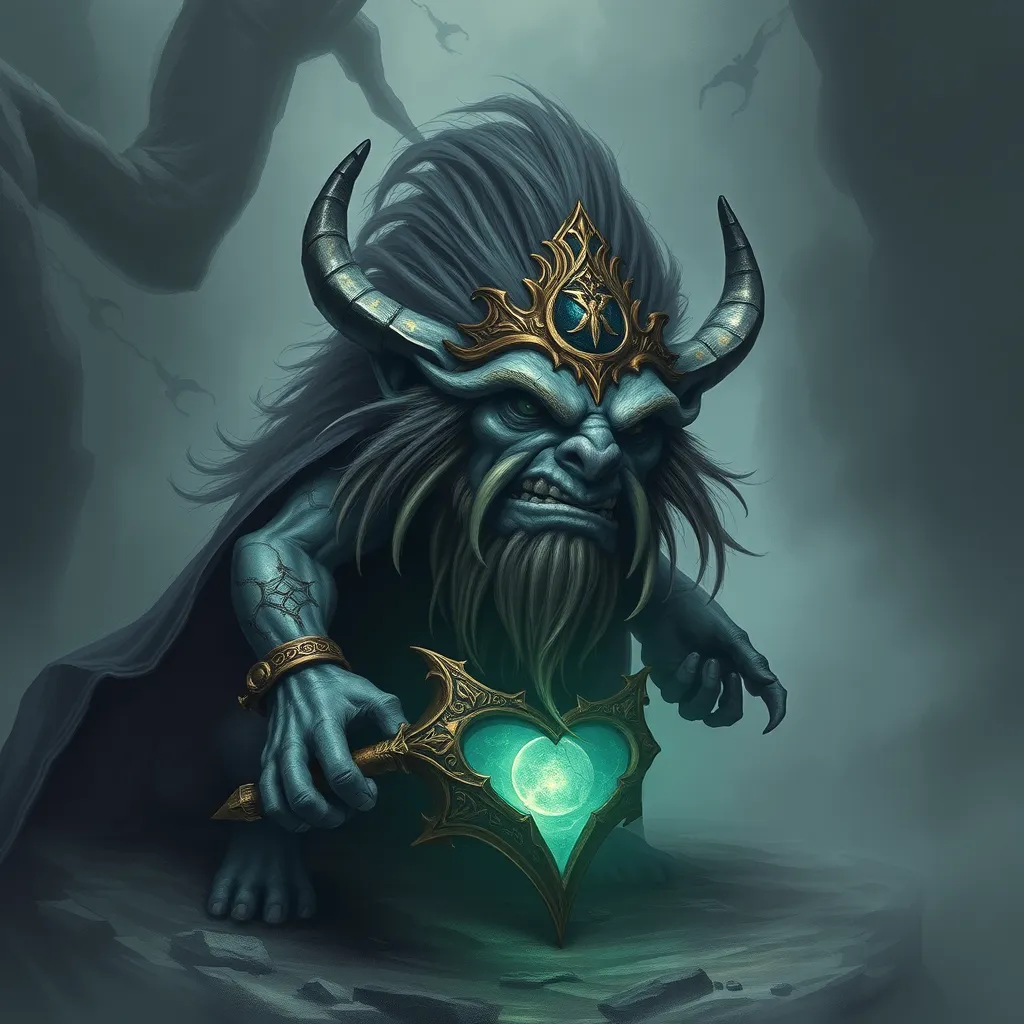The Troll as Protector: Tales of Guardianship and Wisdom
I. Introduction
Trolls have long been a fascinating element of folklore and mythology, capturing the imaginations of cultures around the world. Traditionally portrayed as menacing creatures lurking in the shadows, trolls have a duality that is often overlooked: they can also embody the roles of guardians and wise protectors. This article will delve into the protective roles of trolls in various tales, showcasing how these enigmatic figures have transitioned from threats to symbols of guardianship and wisdom.
II. Historical Context of Trolls in Mythology
The origins of troll mythology can be traced back to Scandinavian and Norse folklore, where they were often depicted as brutish beings inhabiting mountains and caves. These creatures were believed to possess immense strength and were associated with the untamed aspects of nature.
Common characteristics of trolls include:
- Large, intimidating stature
- Rough, often grotesque appearance
- Connection to the natural world, particularly mountains and forests
Over the centuries, the figure of the troll has evolved significantly, transitioning from a fearsome adversary to a more complex character. In modern interpretations, trolls are sometimes depicted with more nuanced personalities, reflecting the changing attitudes towards these mythical beings.
III. The Troll as a Guardian in Folklore
In many tales, trolls serve as protectors of both people and nature. For instance, in Scandinavian folklore, there are stories of trolls who guard hidden treasures or protect sacred sites from intruders. These narratives illustrate how trolls can embody the role of guardians in various contexts.
Examples of protective trolls include:
- The Three Billy Goats Gruff: In this classic tale, the troll under the bridge ultimately serves as a guardian of the bridge itself, challenging those who wish to cross.
- Trolls in Norse Myths: Some trolls are depicted as protectors of sacred places, preventing unwanted visitors from trespassing.
Similarly, comparative stories from other cultures often feature beings that take on protective roles. In Celtic mythology, for example, the concept of the guardian spirit resonates with the idea of trolls as protectors of the land.
The symbolism of trolls as guardians often reflects their connection to nature and the earth. They are seen as the defenders of natural landscapes, ensuring that harmony is maintained in their realms.
IV. Themes of Wisdom in Troll Narratives
Troll narratives frequently portray these creatures as wise beings, possessing knowledge that transcends their brutish appearances. In many stories, trolls impart vital lessons to protagonists, demonstrating that wisdom can come from unexpected places.
Notable lessons imparted by trolls include:
- The value of patience and perseverance
- The importance of respecting nature and its boundaries
- Wisdom in understanding one’s own limitations and strengths
This relationship between wisdom and guardianship is pivotal in many tales. Trolls often act as mentors, guiding heroes on their journeys and teaching them essential life lessons that contribute to their growth.
V. Modern Interpretations of Trolls as Protectors
In contemporary literature and media, trolls are often reimagined as heroes or allies rather than mere villains. This shift reflects a broader cultural change in how we view these creatures. Movies, books, and video games have embraced the idea of trolls as complex characters with protective instincts.
Some notable modern interpretations include:
- Pixar’s “Trolls”: This animated feature presents trolls as colorful, joyous beings who embody friendship and community.
- Fantasy novels: Many fantasy series depict trolls as misunderstood creatures who play crucial roles in defending their realms.
These reinterpretations highlight the cultural significance of trolls in modern storytelling, emphasizing themes of acceptance, diversity, and the breaking down of stereotypes.
VI. Trolls in Popular Culture: Guardians of the Digital Age
The emergence of internet trolls has introduced a new dimension to the concept of trolls in popular culture. While traditional trolls are often viewed as protectors, modern internet trolls can embody a paradoxical relationship between protection and harm.
Online communities can serve as modern guardians in many ways:
- Providing support and protection for marginalized voices
- Creating safe spaces for discussion and sharing
However, the role of internet trolls also raises concerns about the impact of online behavior, showcasing the complexities of protection in digital spaces. The duality of being both protectors and antagonists reflects the multifaceted nature of trolls in our contemporary world.
VII. Lessons Learned from Troll Guardianship
Tales of troll guardianship offer valuable lessons on the nature of protection and wisdom. Some key takeaways include:
- Understanding that protectors can come in many forms
- The importance of looking beyond appearances to find wisdom
- Recognizing the value of nature and the need to protect it
These stories can inspire real-world acts of protection and wisdom, encouraging individuals to embrace the role of guardians in their own communities and lives. By understanding different perspectives on guardianship, we can foster a more compassionate and inclusive society.
VIII. Conclusion
In conclusion, the duality of trolls as protectors and wise figures is a profound aspect of their legacy in storytelling. From ancient tales to modern interpretations, trolls continue to captivate our imaginations, challenging us to reconsider our perceptions of these complex beings.
As we reflect on the enduring legacy of trolls in folklore and popular culture, we invite readers to explore and share their own troll tales and interpretations. These narratives not only enrich our understanding of trolls but also inspire us to recognize the protective forces in our own lives.
